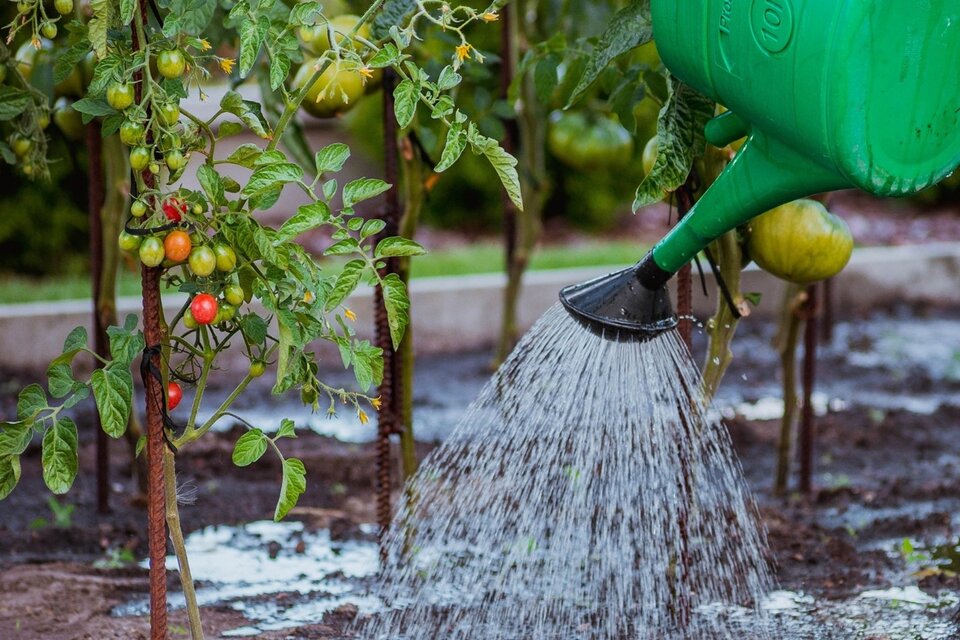Water Conservation in the Vegetable Garden

There are so many decisions to be made when it comes to vegetable gardening. Selecting the right location, determining what to plant, even how many plants you might need. One topic that might not have crossed your mind is how to make the vegetable garden more water conscious. Conserving water in the vegetable garden may sound more difficult than it really is.
Location and Soil Type
First and foremost is the location. Knowing the soil type of the site is the first step in the process. Heavy clay soils allow water to infiltrate very slowly, but hold more water compared to sandier soils. In contrast, sandy soils need to be watered more frequently due to their decreased water holding capacity. Once you know what soil texture you have, then you can make more educated water applications to the site.
Testing the soil’s organic matter content can be helpful as well. Soils with more organic matter can have more water holding capacity compared to soils with less organic matter content. Organic matter not only helps with water hold capacity, but it also provides some nutrition for the soil as well.
Plant Selection
Selecting the right plant material is the next step in the vegetable garden process. Some vegetables are good for processing (canning/freezing), while others are best enjoyed fresh. When selecting plants for the vegetable garden, be sure to pick those that will be enjoyed by the household in the manner they will be used. Once those plants are selected, try to find drought-resistant cultivars or varieties if possible. Some ‘bush’ type cultivars can be more water conscious than their more vining or sprawling counterparts.
Some water-efficient vegetables can include asparagus, Swiss Chard, eggplant, mustard greens, peppers, and roma tomatoes. In general, warm season crops will handle drier conditions better than cool season crops. Tomatoes, squash, and melons have a deeper root system and can draw more water from within the soil profile.
Garden Arrangement
The method in which vegetables are planted might also influence water usage. Block planting and square foot gardening refers to seeds or plants arranged in a grid pattern instead of in rows. This means you have a higher density of plant material in a small area. The dense plant spacing can lead to decreased weed, increased yields, and make watering more efficient.
Another method is to try companion planting like ‘The Three Sisters’ planting. This type of planting utilizes corn, squash and beans. The three plants work with each other. Corn provides structure for the beans to climb, the beans provide cover for the soil and provide nitrogen to the soil, and the squash covers the soil. This helps to cut down on space needed, the weeds to pull, and conserves soil moisture.
Mulch
Using mulch has many benefits. One benefit to using organic mulches is that they help to decrease the number of water-stealing weeds. By keeping the weed numbers down, the soil moisture can be used by the vegetables. Organic mulches can also cover the soil, helping to hold that moisture in. Over time they can break down and add organic matter to the soil. It’s really a win-win-win.
Efficient Irrigation
Efficiently applying water is also very important in a water-conserving vegetable garden. Both the water application method and the time of day the water is applied can make a big difference.
Ideally, vegetable gardens should be watered in the early morning hours. This allows time for the water to soak in and time for the leaf surface to dry off during the day, decreasing the potential for disease. In Nebraska, the early morning hours can also be the calmer parts of the day. This means the water that is applied will end up in the garden and not be wind-blown offsite.
The most efficient way to apply water to the vegetable garden is to use soaker hoses or a drip system. Watering this way can cut your water usage in half. This is because you are applying the water directly to the soil and by applying mulch, it helps to keep the moisture in the soil.
With a little work upfront, you can easily construct a water conserving vegetable garden. This is not only good for the environment, but also for your pocketbook.
References
https://extension.oregonstate.edu/news/some-vegetables-require-less-water-others
https://extension.sdstate.edu/vegetable-gardening-during-drought
https://www.anokamastergardeners.org/blog/creating-a-drought-tolerant-vegetable-garden
This article was reviewed by Sarah Browning